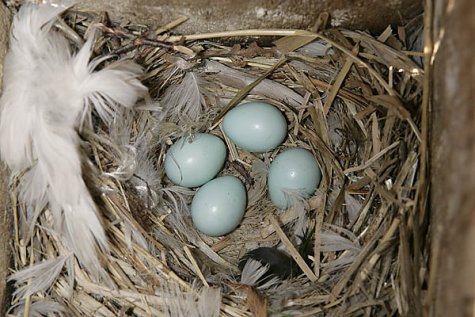Have you already seen sky-blue egg shells on the lawn?
Photo: Arne Ader
Translation: Liis
Starling nest
Starling Kuldnokk Sturnus vulgaris
In mid-May the time has arrived, or is just coming, because starlings are very time-coordinated nesters. There are usually four to six uniformly sky-blue eggs in the nest, and the adults drop the shells that could disturb the chicks out of the nest. The incubation period lasts somewhere around 11 days and the whole clutch of chicks is hatched within a couple of days.
Males incubated the eggs much less often than the females, who spend the night on the nest. In early morning the males arrive at the nest again; they spent the night in a ”male gang” somewhere in a dense coppice or reed bank.
After hatching a stressful time begins for the adult birds – one of the parents warms the chicks, the other flies straight away to get food. There is less starling song for a couple of weeks, we often hear alarm calls – be it then a human in the yard, or the cat of the house …
The quiet twittering of the chicks is audible already after a few days and becomes louder by each day. The chicks are fed animal food from the ground (insects, their larvae and of course invertebrates), in swallow mode insects in the air are caught too, but such a sight we see more rarely. In early June the adults encourage the chicks to get out of the nest but that takes hard work ...
Nearly 250 people already keep a garden bird diary – why not join them: http://www.eoy.ee/aed/
(Estonian original publ 16.05.2014)









